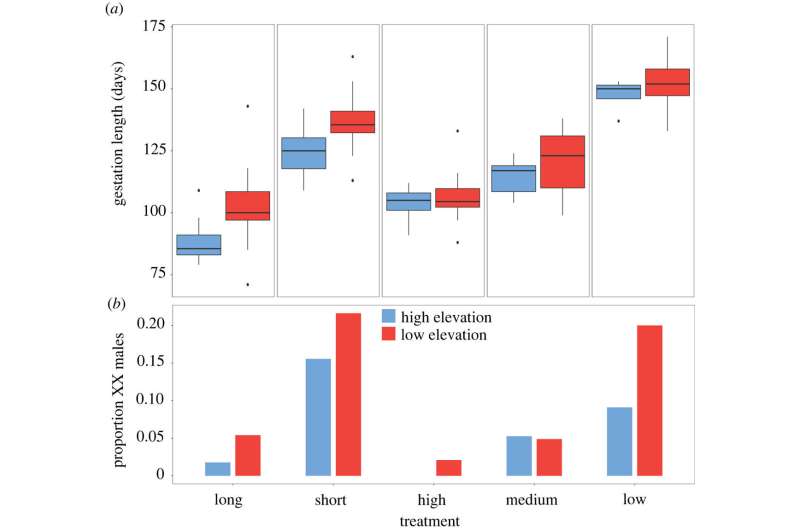June 1, 2022 report
A lizard that can switch from female to male before birth

A team of researchers at the University of Tasmania working with a colleague from the University of Canberra has found that a species of lizard can switch from female to male prior to birth. In their paper published in Proceedings of the Royal Society B, the group describes experiments they conducted with snow skinks in Tasmania and what they learned from them.
Prior research has shown that some creatures that lay eggs, such as frogs, reptiles and fish, can undergo a gender swap while still in the egg. This has been attributed to environmental conditions, such as warmer or cooler than average temperatures. In this new effort, the researchers found the same behavior in a non-egg-laying lizard.
To learn more about the skinks, the researchers captured 100 pregnant specimens from mountain habitats in Tasmania—prior research has shown that they live at different elevations, which means different temperatures. The researchers then divided the specimens into several groups that were kept in terrariums at different temperatures.
After the mothers gave birth, the researchers tested the offspring for gender, both anatomically and genetically. They found that all of the baby skinks with female anatomy had XX chromosomes; thus, no males had swapped to become female. They also found that 7% of the baby skinks born with male sex organs had XX chromosomes, indicating that they had swapped gender while still developing inside of their mother. The researchers also found that most of the gender swapping had occurred with skinks growing inside of a mother that had been exposed to cooler temperatures than the others. They also noted that most of the swaps occurred with mothers who had been living at lower altitudes, which would have been the warmest part of the mountains. Thus, mothers raised in warm environments appeared more likely to have swapped offspring if they were moved to higher, colder environments.
This represents the first instance of a non-egg-laying creature that swaps gender due to environmental conditions, a finding the researchers call "striking" because it is so clearly one-sided—only skinks born female experienced gender-swapping.
More information: Peta Hill et al, Sex reversal explains some, but not all, climate-mediated sex ratio variation within a viviparous reptile, Proceedings of the Royal Society B: Biological Sciences (2022). DOI: 10.1098/rspb.2022.0689
Journal information: Proceedings of the Royal Society B
© 2022 Science X Network




















